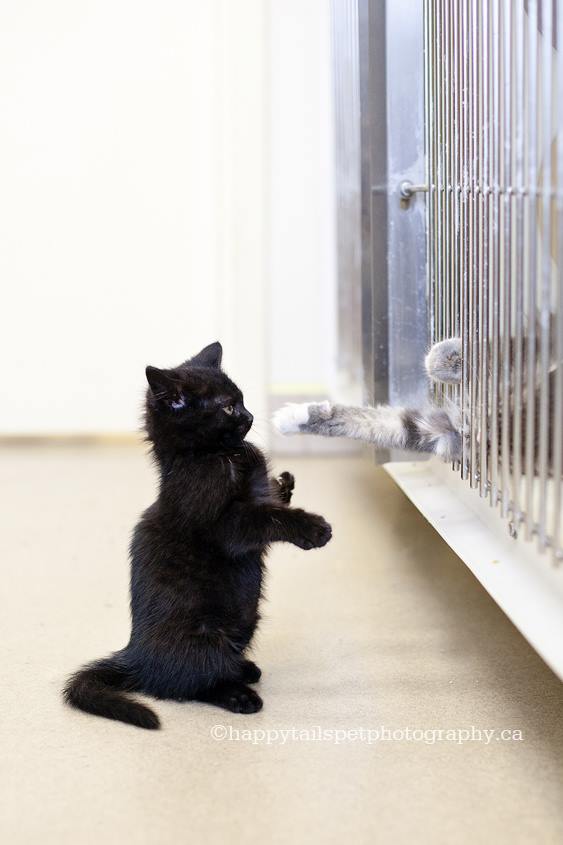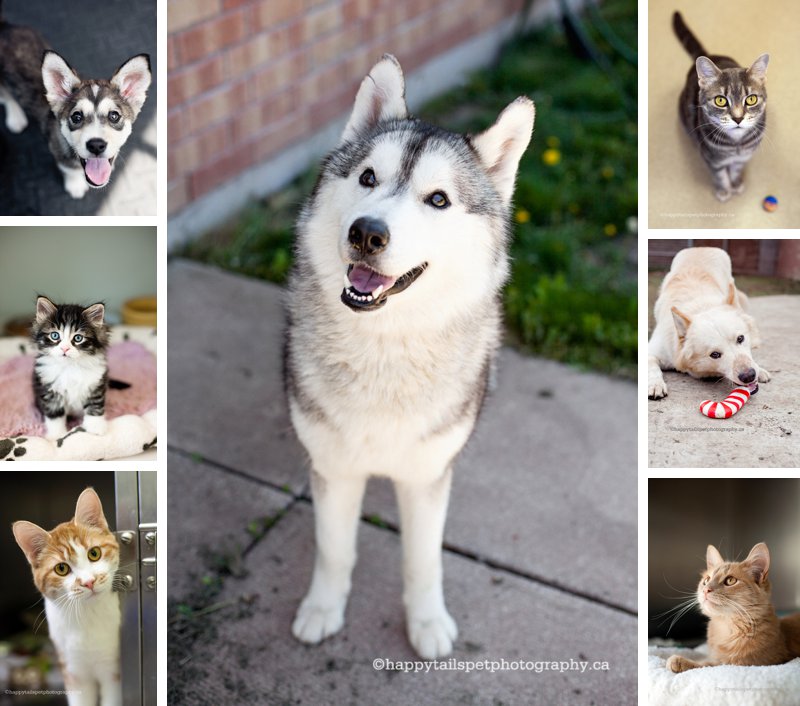How to photograph shelter pets

Before I officially launched Happy Tails a few years back, I sent a letter to a few area shelters asking if they might be interested in my services as a volunteer photographer. The Burlington Humane Society (BHS) responded right away, and shortly after I started visiting the shelter a few times each month to photograph the animals available for adoption. Back then, I did it for practice as I prepared to launch my business, and to help build my portfolio and maybe even get my name out into the community. But little did I know that the biggest reward would be the happiness and fulfillment it would bring into my life.
Over the years, I have photographed more than a thousand homeless pets for BHS and other local rescues and shelters. A good photograph can greatly increase a dog or cat’s chance for adoption, and not only does it help a pet find a new loving home more quickly, but it then opens up a space at the shelter for another animal in need. There are plenty of approaches to shelter photography, and my methods are pretty low-key, but I thought my insight into how to photograph shelter pets might be of benefit to others who want to volunteer their skills to help a local rescue or shelter.
You don’t need a backdrop, lighting, a bag full of camera equipment and an assistant to effectively photograph at a shelter — I don’t use any of that! I use my Canon 5D Mark II, one lens – my 50 mm 1.4 – and I work alone most of the time.
Here are a few tips to help you get started:
Form a good working relationship with shelter staff. I always check in with the staff before each visit and ask for a list of animals that need new photographs (in priority order if possible). Upon arrival, I always ask if there are any animals that might be difficult to work with — dogs and cats that are new to the shelter environment can be very skittish and afraid, and often shouldn’t be handled or allowed to roam free. Once I note the more difficult cases, I set off on my rounds, leaving those ones to the end. I also leave the dogs to the end, since I need a staff member to help me wrangle them and take them into the yard.
Be calm, quiet and take your time. I work slowly and quietly, and I talk to the animals in a calm voice. This is why I prefer to work alone — it’s much easier to maintain a low-key environment and it’s less stressful for the animals. I like to photograph each cat roaming free outside its cage whenever possible and dogs outside in the yard — it gives their personalities a chance to shine through. If a cat is shy and prefers to stay in its cage, that’s fine too, as long as they are okay with me and my camera. Cats that are really shy and clearly don’t want me too close, I usually don’t photograph — I leave them to my next visit to allow them more time to get comfortable and adjusted to their environment. I also don’t start photographing right away — with the cats, I will often sit on the floor and give each animal time to enjoy stretching its legs and getting to know me. For the dogs, they are usually so happy to be outside, I try to let them sniff and do their business before I get started.

Ask for help when you need it. Because I don’t know the backgrounds of the animals, I don’t handle them unless I feel absolutely comfortable. I’ll pet them if they let me (most love the attention!), but I won’t fish them out from small spaces or pick them up if I get the vibe they won’t like it. I’ll ask one of the animal handlers to step in to help me out.
Look for the outtakes and take time to play. Sometimes the images that get the best reactions are the ones you aren’t expecting. I’m always observing and when something funny happens — it is inevitable! — I try to be prepared and get a shot. Tongues sticking out, upside down photos, two animals interacting, cats in the sink (I once even got a shot of a shelter cat in the building’s fridge!) … the list is endless. And take time to play! It’s good for you and the animals!

Quality not quantity. Consider how much time you can devote to volunteer photography and don’t over-extend yourself — I would rather get a handful of really good portraits than a whole bunch of average ones. I spend one to two hours each visit, and I can usually photograph 10-15 animals in that time — I don’t get them all, but I’ll get the ones I miss on my next visit. I photograph the oldest animals first, along with any that have special needs, since they need the most help. I also try to focus on the black cats because they also tend to be adopted last. I will do a very light touch-up on the images — just removing eye goobers, fixing up small scratches and doing a small contrast and brightening bump when necessary. But I don’t change the appearance of the animals — if they have a wonky ear or funny tail or patchy fur, I don’t alter they way they look. Each animal should be loved just as they are and all of these quirks add to their character — no false advertising.
Know your equipment and what works for you. Through trial (and some error!) I’ve found that the 50 mm works best for me. Shelter pets don’t typically want you in their face and in their space, so I find the nifty fifty puts me at an appropriate distance, while still creating a nice portrait even under dim lighting conditions. I don’t use a flash, and I shoot in manual mode. I also always carry a notebook and pen to keep track of everyone’s name, so I can label the images accordingly.

I always say that volunteering helps me just as much as it helps the animals — it’s like multiple doses of animal therapy and it goes a long way to easing my own stress and making my heart happy. If you’re interested in pet photography, volunteering at a shelter is a great way to learn how to work with animals and get to know your photography equipment really well in a low-stress situation — I highly recommend it! And the animals you help find homes for appreciate it too!
Wags,
![]()
